Aurora’s Davis Bryant hopes to keep a good thing going
Aurora native gets pair of Top 10s in his second pro season
By Tony Dear
No doubt you’ve noticed things are getting real again in the golf equipment world. With the PGA Merchandise Show in Orlando just a couple of weeks away, major product launches are coming thick and fast, most notably with new driver/metalwood launches from Callaway, TaylorMade, Srixon and Ping. This week we’ll take a look at Callaway’s new Paradym driver as well as the irons.
Naturally, the Paradym driver arrived with the usual flurry of buzzwords, cliches, bromides, hooks and tags – ‘revolutionary’, ‘reimagined’, ‘radical’, ‘industry-first’, etc. It can all get a bit old when every single new club promises exceptional gains, and it makes identifying genuine breakthroughs difficult sometimes. Callaway has had a couple of major breakthroughs in recent years, first with Jailbreak technology which first appeared in the Epic driver in 2017, and then in 2019 when the Epic Flash was the first driver made using Artificial Intelligence (AI). Though the Paradym’s carbon-only, titanium-free body might not be quite as exciting as Jailbreak or AI, it does appear to be a genuine breakthrough with Callaway Tour pros recording some impressive numbers in testing.
The all-carbon chassis of the driver is made with Triaxial carbon in the crown and Forged Carbon in the sole making it 45% lighter than a typical titanium body. The newly-designed Jailbreak frame is 33% lighter than its predecessor, and a new A.I.-optimized titanium face is designed to boost ball-speeds and produce a more consistent shot pattern.
The announcement of the club was quickly followed by its first PGA Tour win last week when Jon Rahm, who, Callaway says, has picked up an extra six yards in testing, took advantage of Collin Morikawa’s disastrous back-nine in the Tournament of Champions at Kapalua. While Callaway’s last driver family – Rogue ST – included four models, there are just three Paradym drivers:
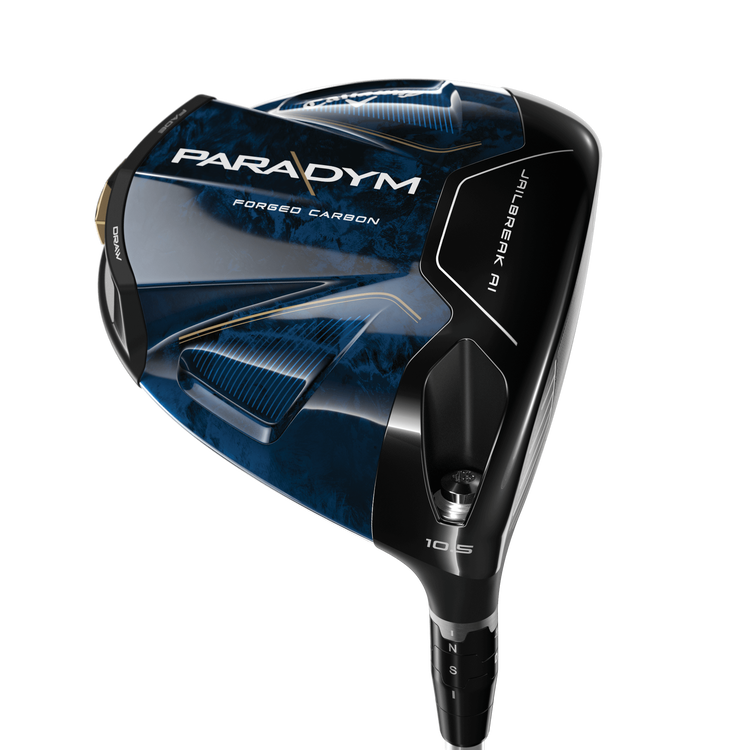
The Paradym, let’s call it the standard version for now, is expected to fit the widest range of players, and features a 15 gram Adjustable Perimeter Weight (sliding weight that affects shot-shape). The standard version isn’t as long from front to back as the Rogue ST, but even though it’s a little more compact the 360˚ carbon body still produces a high MoI. This club will launch high with low spin and be the most forgiving of the three.
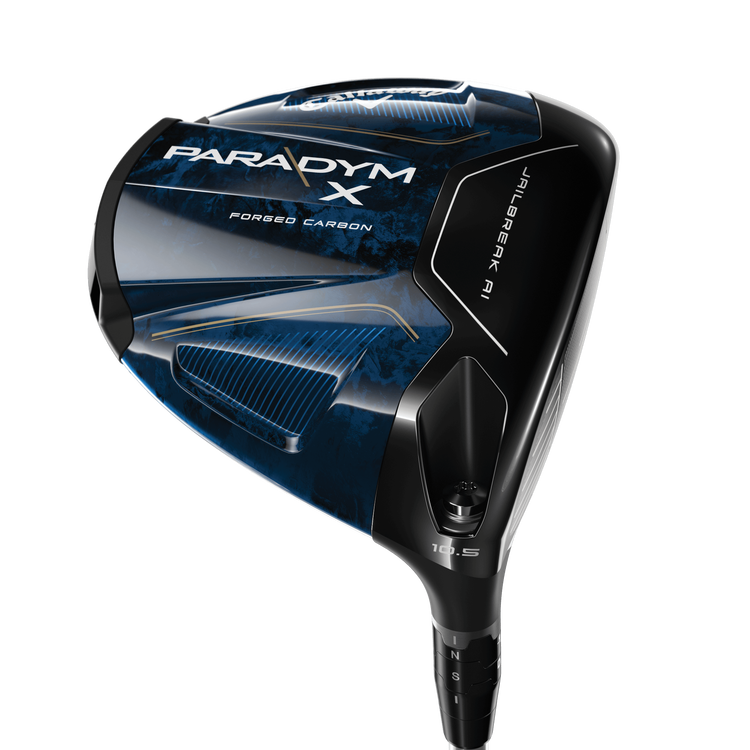
We’re not going to question why the draw-bias driver is called the Paradym X (apparently though golfers like being able to hit a draw they don’t necessarily like seeing the word in the driver’s name), but this is the club for those wanting to promote a little right-to-left spin (right-handers). The shot bias comes from internal weighting meaning there is no moveable weight and, though not quite as forgiving as the standard model, the X still bills itself as a high-MoI club that launches high.
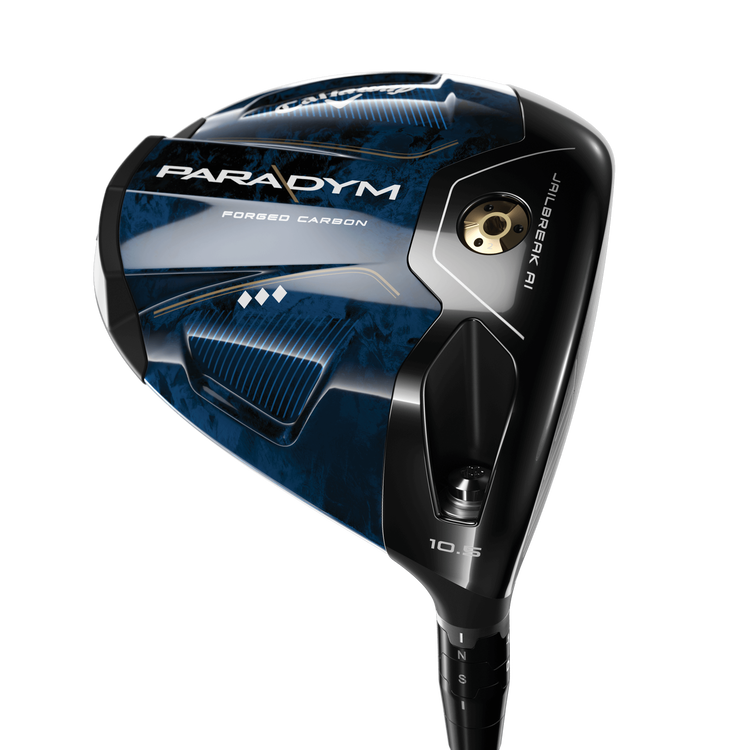
The Paradym Triple Diamond is the better player’s club with a slightly more compact frame (450cc as opposed to 460cc) that launches the ball low with low spin.
Price – $600 each
Lofts – Paradym: 9˚, 10.5˚, 12˚
Paradym X: 9˚, 10.5˚, 12˚
Paradym Triple Diamond: 8˚, 9˚, 10.5˚
Shafts – Aldila Ascent PL Blue (high launch, high spin); Project X HZRDUS Silver (mid-launch, mid
-spin); Project X HZRDUS Black (mid/low-launch/spin); Diamana Kai’Li White (low launch,
low spin).
Right and left hand (8˚ Triple Diamond in right-hand only)
Women’s Paradym and Paradym X drivers also available.
Pre-sale begins on Friday (1/13) and the full retail release is on Feb. 24th.
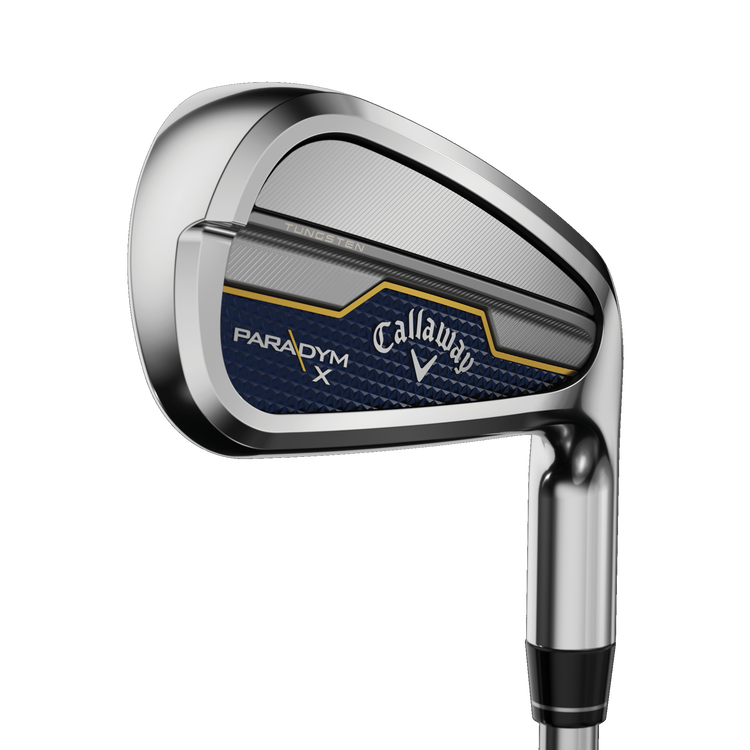
Meanwhile, there are two Paradym irons – Paradym which is a player’s distance club and Paradym X which is for game-improvers though you wouldn’t necessarily know it to look at it. Both have a smart brushed chrome finish with grey, slate and blue coloring in the back and a nicely-contrasting yellow line running from one side to the other. It looks cool – on both clubs.
Both feature 455 Stainless Steel heads with a forged Cup Face and Speed Frame which strengthens the connection between all points of the clubhead and supports the face without preventing it from flexing. Because the irons have hollow bodies, the face is allowed to flex which helps increase ball-speeds. But those speeds can come at the expense of sound and feel. Callaway’s Urethane Microspheres help improve the sound of impact and make hitting the ball an altogether more pleasant experience.
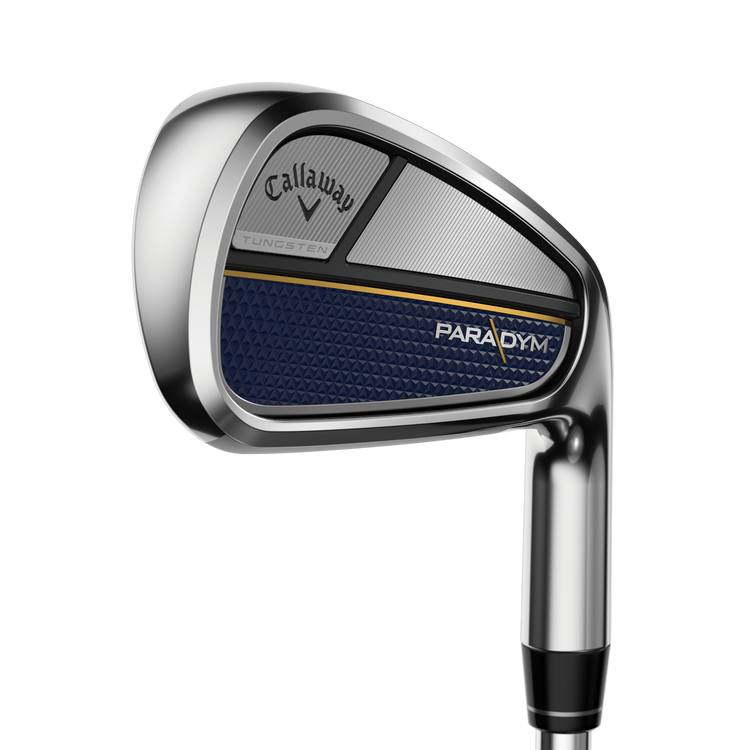
The Paradym is obviously the smaller, more compact of the two with less offset and a thinner top-line while the Paradym X has some pretty strong lofts. The Paradym has up to 67 grams of tungsten pushed low in the head to increase the club’s MoI and make launching the ball high into the air that bit easier, while the Paradym X has up to 79 grams.
Price – $200/club (steel), $215/club (graphite)
Paradym is available in 4-iron through gap wedge plus a 51-degree wedge. Paradym X has the same availability with an additional 56˚ wedge.
Lofts – Paradym: #4 – 20˚, #7 – 29˚, PW – 42˚
Paradym X: #4 – 18.5˚, #7 – 27.5˚, PW – 41˚
Shafts – True Temper Elevate MPH (steel) Project X HZRDUS Silver (graphite).
Women’s shaft is the Aldila Ascent PL Blue
Right and left-hand
Pre-sale begins on Friday (1/13) and the full retail release is on Feb. 24th.
Check out callawaygolf.com for Paradym fairway metals and hybrids too.
Colorado AvidGolfer Magazine is the state’s leading resource for golf and the lifestyle that surrounds it, publishing eight issues annually and proudly delivering daily content via coloradoavidgolfer.com.
Aurora native gets pair of Top 10s in his second pro season
Quail Dunes is one of the best eastern Colorado courses
The Beast of Berthound Returns at The Ascendant Presented by Blue
Callaway’s new X-Forged and X-Forged Max irons reject tech clutter in favor of old-school austerity